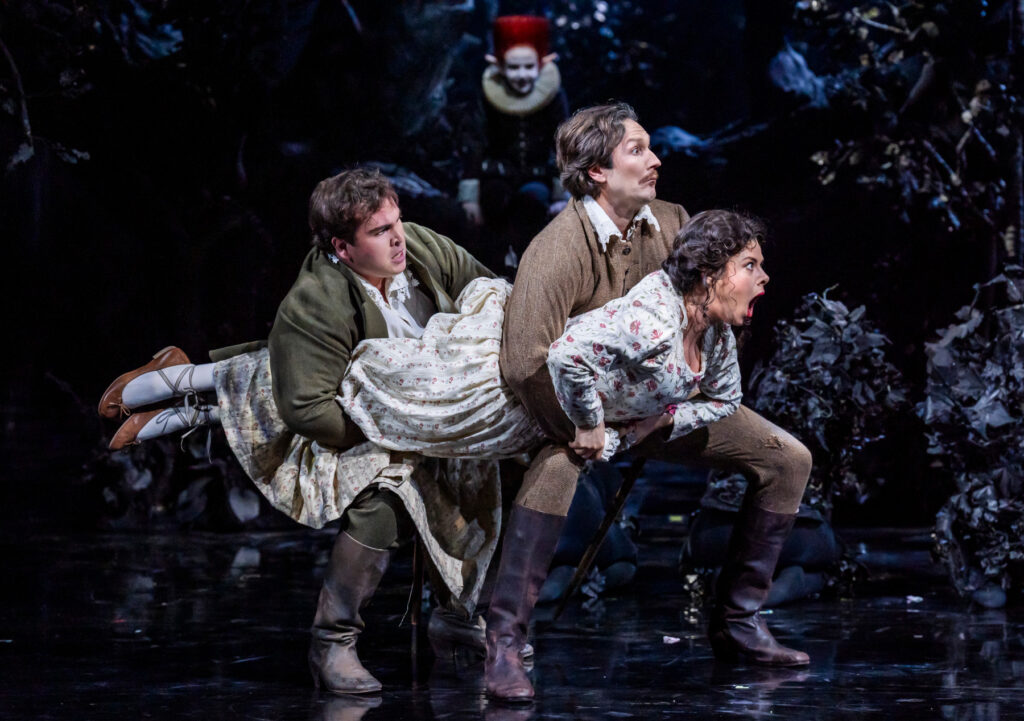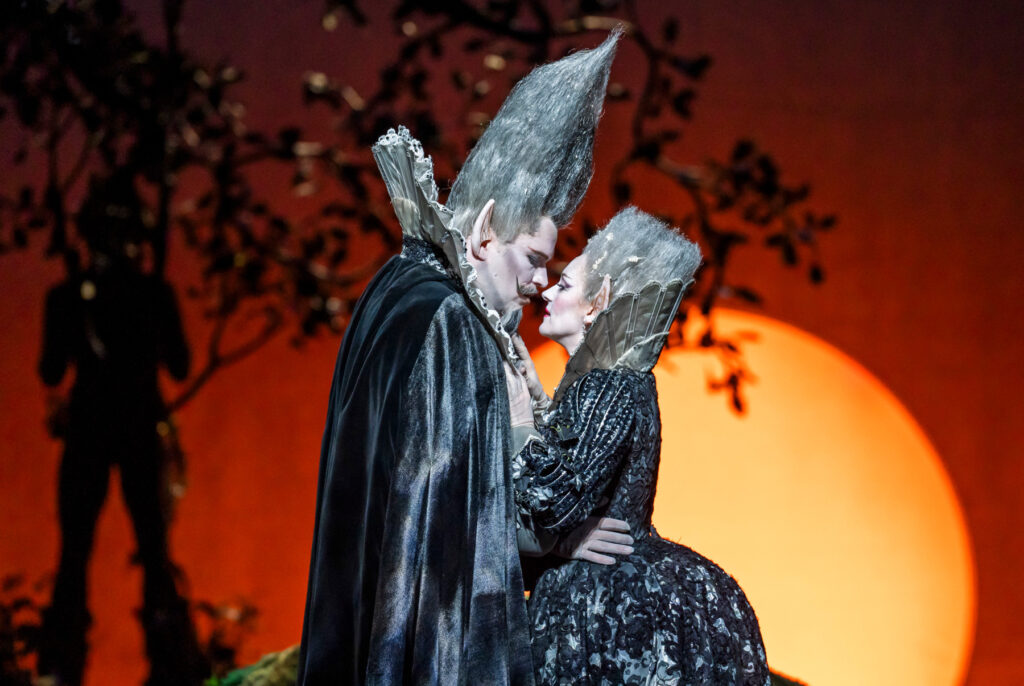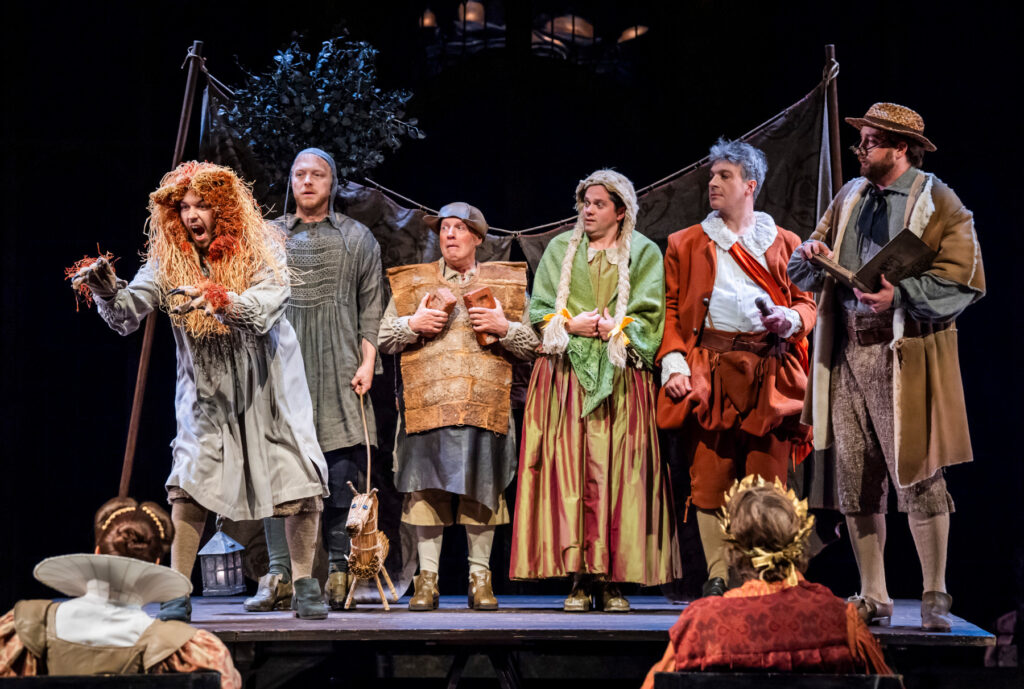Glyndebourne’s programming of Britten’s adaptation of A Midsummer Night’s Dream for its autumn season might seem somewhat eccentric. But with summer now a fading memory and as October wears on, its revelries are no less welcome for all that, especially in this revival of Peter Hall’s deservedly well-loved production, made originally for the same company back in 1981. As everybody in the audience will have come to the venue amidst the Sussex Downs – albeit in modern modes of transport – ‘over hill, over dale, thorough bush, thorough brier’, and past many trees still in full leaf but turning into an array of autumnal colour, we are ready to be immersed in the dark and shadowy woodland which Hall creates for us right from the beginning and retains for most of the drama, perhaps more so than during the summer when bright sunshine impinges upon our experience of the outdoors. Those who saw Falstaff back in the summer will also find that the scene happens to pick up neatly where that left off in Windsor Forest. Shakespeare’s setting for Dream may ostensibly be a wood ‘near Athens’ but of course he had Warwickshire’s Forest of Arden in mind.

The sun’s golden glow intrudes on the opening scene of Act Three as Oberon releases Tytania from the spell of the love juice. But darkness soon falls again, restoring a crepuscular but cosy atmosphere in Duke Theseus’s hall for the Mechanicals’ masque. But Oberon and the fairies creep into that place through the windows, once the mortals have vacated it, for the final scene and as we venture out of the opera house into the evening’s darkness and return home, we too might wonder what spirits or phantasms haunt the night.
Metatheatre may possibly be implied by the resemblance between Oberon, the king of the fairies and therefore of imaginative enchantments, and Shakespeare in his supposed image in the Cobbe portrait, in terms of similar ruffs and facial hair. Essentially Elizabethan costume for the characters emphasises the connection with the play. Certainly, Britten’s composition itself – which adapts Shakespeare’s drama with close attention to the text, and famously includes a play-within-a-play – becomes a theatrical study in putting on a show. As an opera specifically – that most Baroque of art forms – it is apt, then, that the setting adopts a subtle hint of 18th century stagecraft with its series of receding arches, like the arcades or columns which were set out along the wings on stages of that time. Here, however, the arches’ shimmering mirror surfaces eerily reflect the trees’ shifting branches and foliage which grow out of spectral figures. Movement is cleverly calibrated with Britten’s evocative score, with its low rumblings and slides, both in the very opening and subsequent interludes so that choreography and sound appear to merge organically. Here it’s not the hills that are alive with the sound of music, but the trees.

Atmosphere is wonderfully conjured up as much in the pit, as on stage, by conductor Bertie Baigent with The Glyndebourne Sinfonia. Subtle, Debussyan sonorities are sustained to recreate the magic of the forest’s shadows. There are richer romantic depths, as in the opening of Act Two where the orchestra’s gentle throb is reminiscent of the night scene in the equivalent Act of Tristan und Isolde; or more dramatic, dynamic passages, such as the altercations between the two pairs of lovers. But the ensemble’s generally veiled sound always lets the voices come to the fore, even in heightened moments so that there is a fine balance among all the musical elements throughout.
These are also appropriately sustained among the vocal soloists, who demarcate the three groups of characters well. Nils Wanderer fosters an ethereal steadiness in the countertenor role of Oberon, compared with which Jennifer France flutters in Tytania’s coloratura, but with a softness to preserve the fairy charm. The young singers of Glyndebourne Youth Opera and Trinity Boys Choir also float a winsome choral texture as the fairies. The lovers exhibit more full-blooded passion – Samuel Dale Johnson’s Demetrius impetuous and clipped, Robert Lewis more exuberant, perhaps a touch wayward, as Lysander. Where Alexandra Lowe’s Helena is more assertive, Stephanie Wake-Edwards despatches a coquettish flourish as Hermia.

The rustics form a droll group, not resorting to slapstick excess or vulgarity, but pronouncing their comic lines with a parlando flexibility. Foremost among them, Joshua Bloom, as Bottom, ably acts through well-differentiated tone of voice, like any good classically trained actor, rather than exaggerated gesture or declamation. Last, but certainly not least, is Saxon Fox in the speaking part of Puck. He’s a wonderful little actor, elvish in appearance here, and impish as he scampers around. In the epilogue he asks, on behalf of the players, to be excused anything that offends; but no apology at all is required for this performance.
Curtis Rogers
A Midsummer Night’s Dream
Composer: Benjamin Britten
Libretto: The Composer and Peter Pears after William Shakespeare
Cast and production staff:
Cobweb – Michael Mulroy; Peaseblossom – Alex Wright; Mustardseed – Xavier Karelis; Moth – Glenn Tong; Puck – Saxon Fox; Oberon – Nils Wanderer; Tytania – Jennifer France; Lysander – Robert Lewis; Hermia – Stephanie Wake-Edwards; Demetrius – Samuel Dale Johnson; Helena – Alexandra Lowe; Quince – Michael Ronan; Snug – Jamie Woollard; Starveling – Alex Otterburn; Flute – James Way; Snout – Alasdair Elliott; Bottom – Joshua Bloom; Theseus – Dingle Yandell; Hippolyta – Clare Presland
Director – Peter Hall; Designer – Julia Hansen; Revival Director and Original Choreographer – Lynne Hockney; Designer – John Bury; Revival Choreographer – Luke Murphy; Lighting Designer – Paul Pyant; Conductor – Bertie Baigent; Glyndebourne Youth Opera, Trinity Boys Choir, and The Glyndebourne Sinfonia
Glyndebourne Festival Opera, Lewes, East Sussex, England, 12 October 2025
Top image: Bottom (Joshua Bloom), Tytania (Jennifer France) and fairies
All photos © Glyndebourne Productions Ltd. Photo: Tristram Kenton